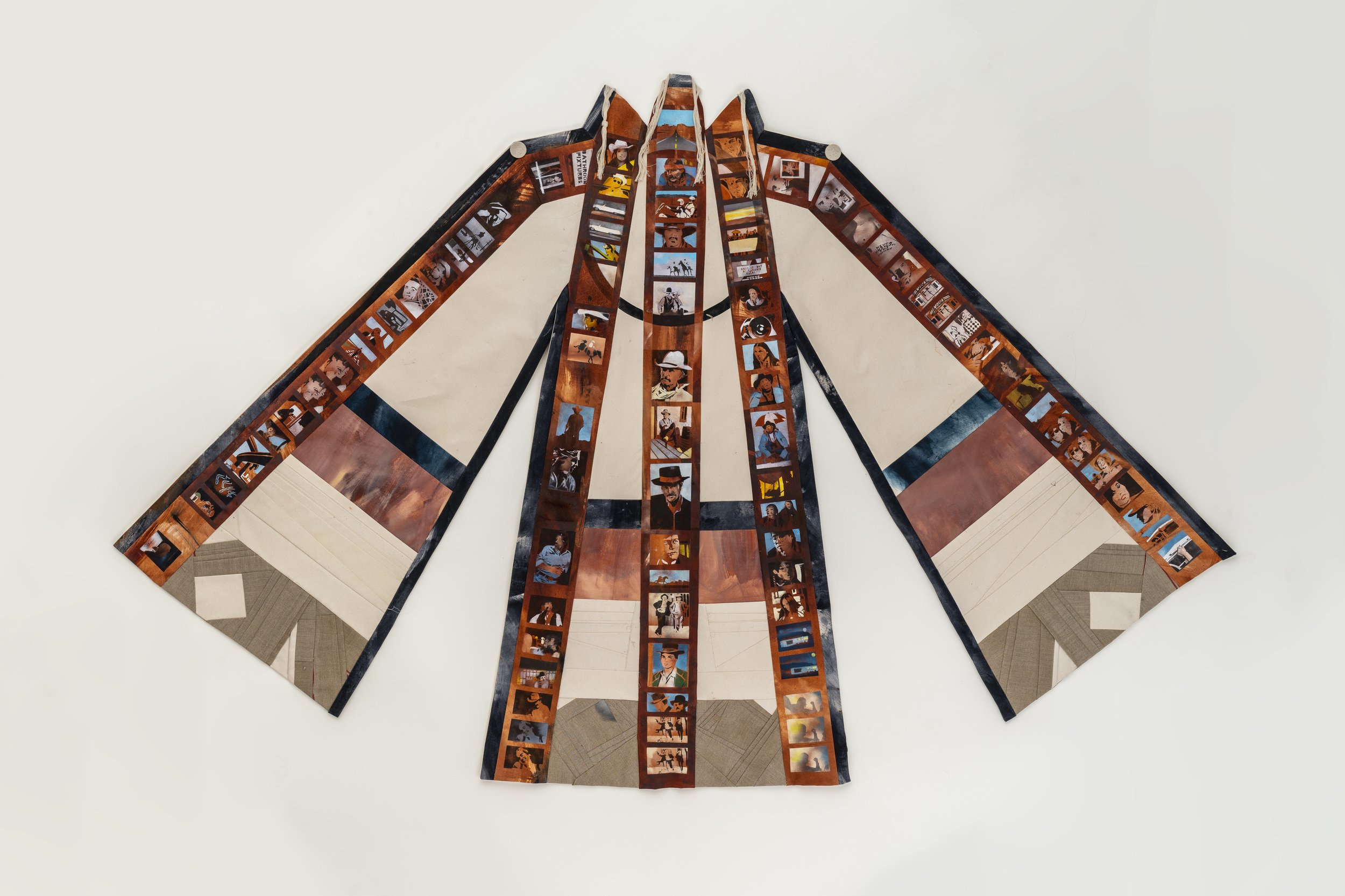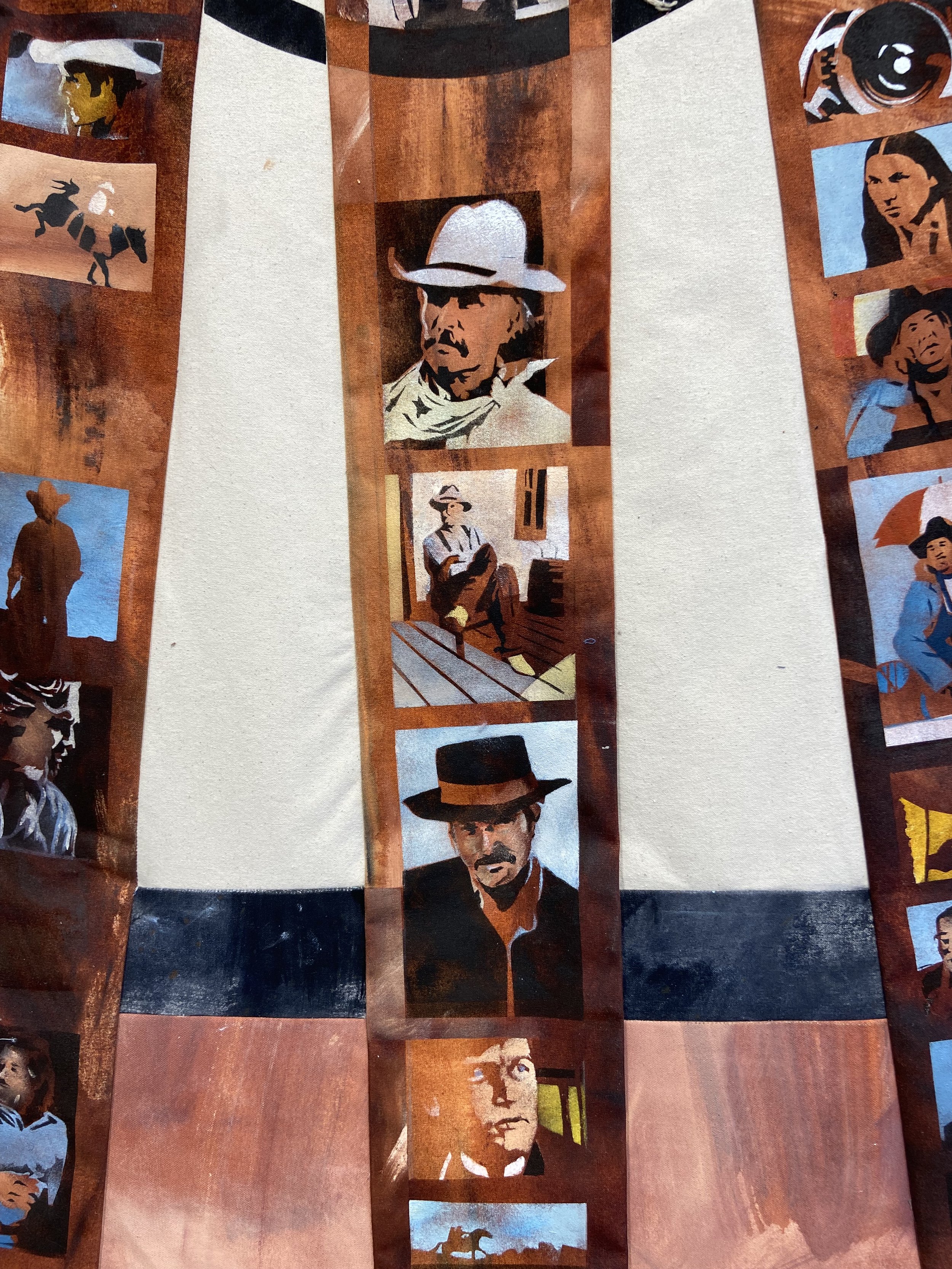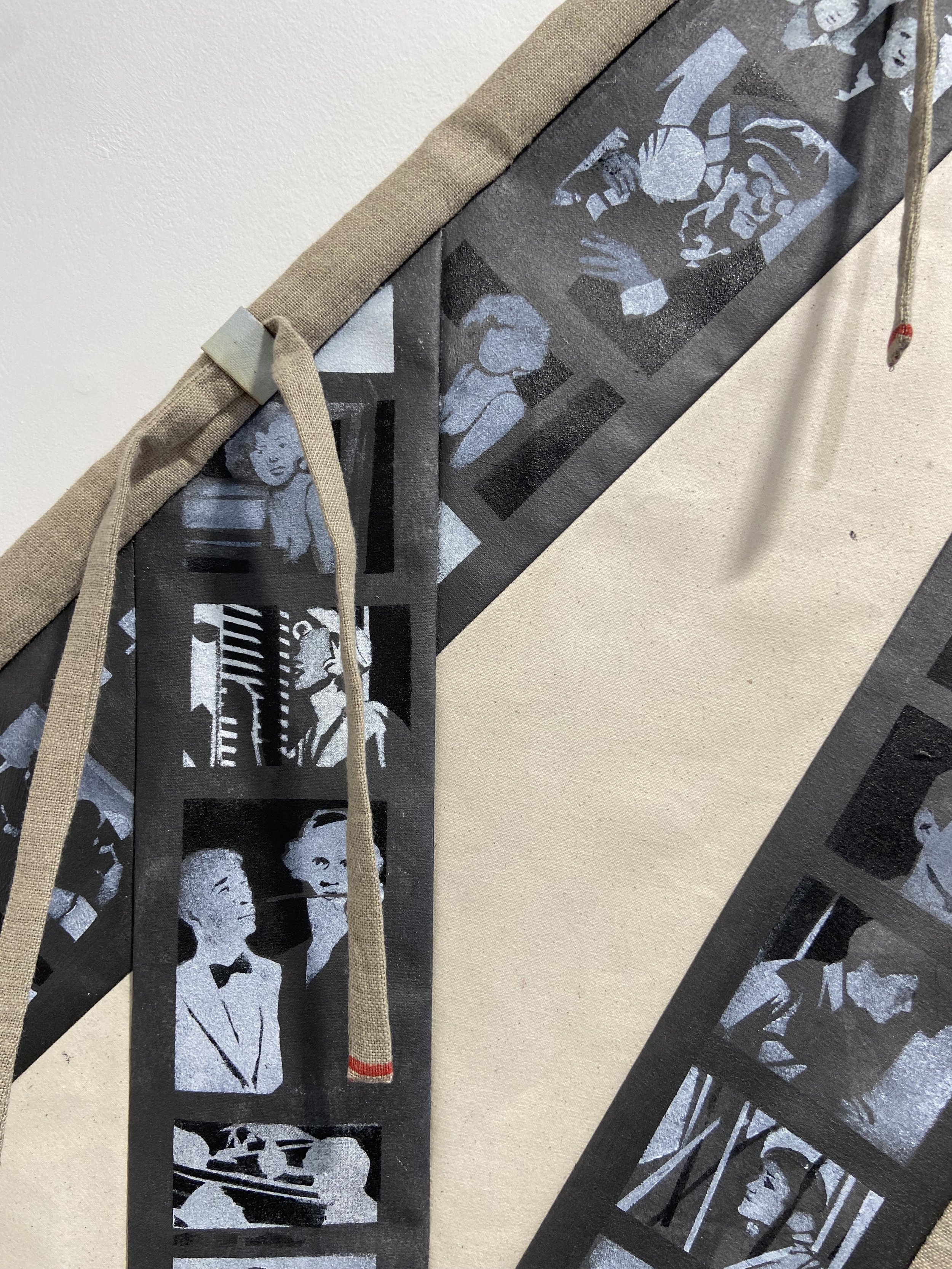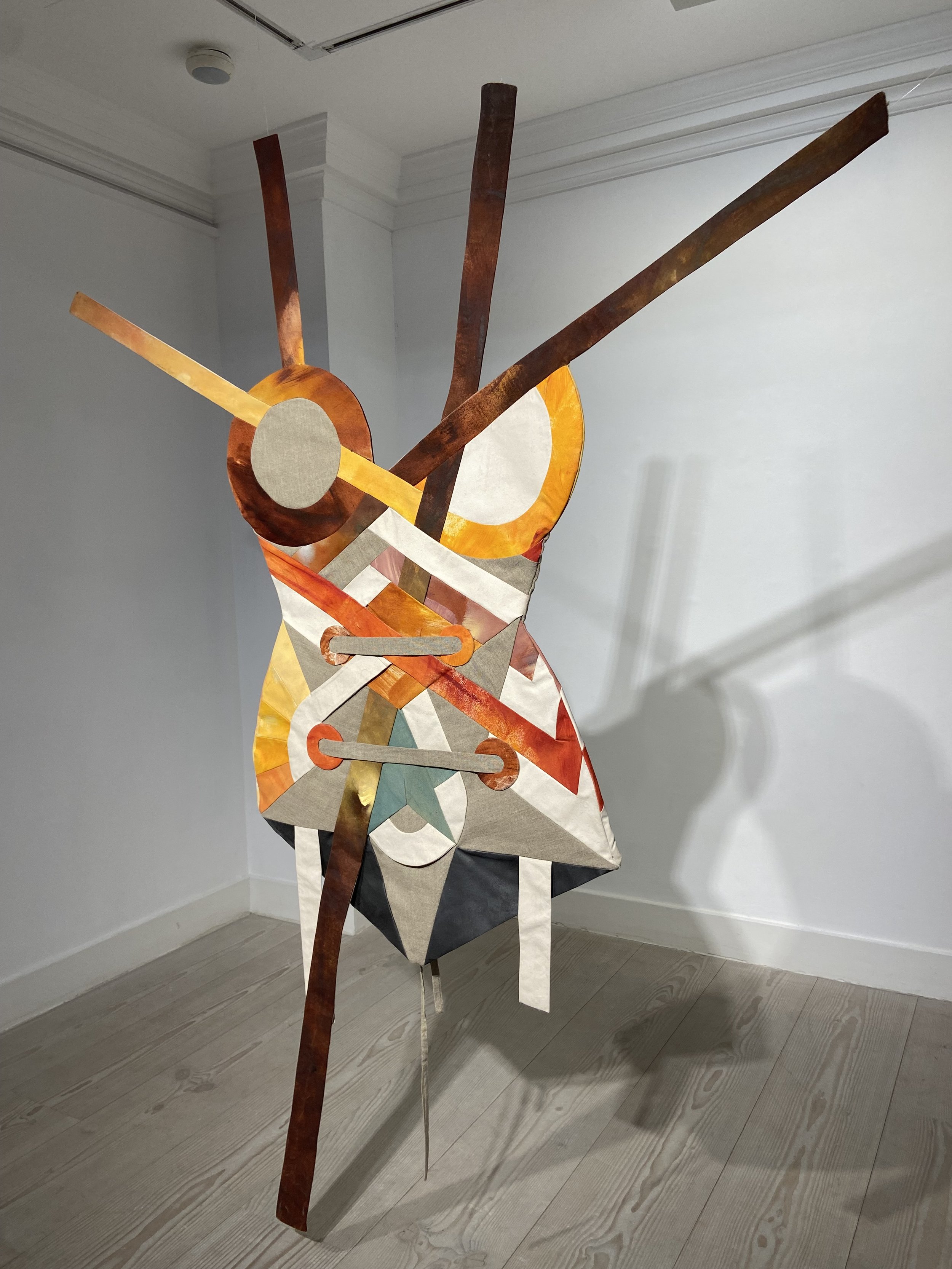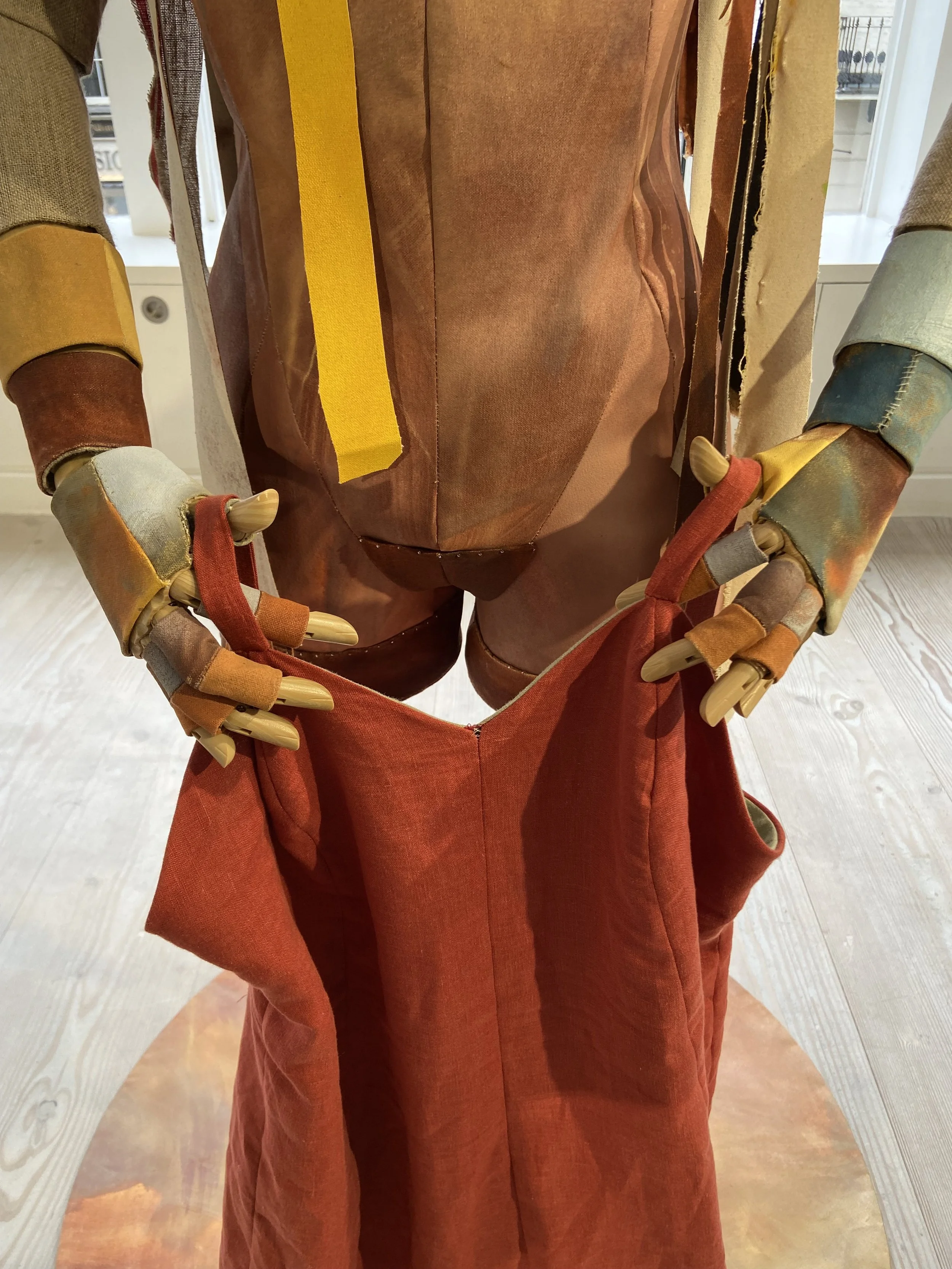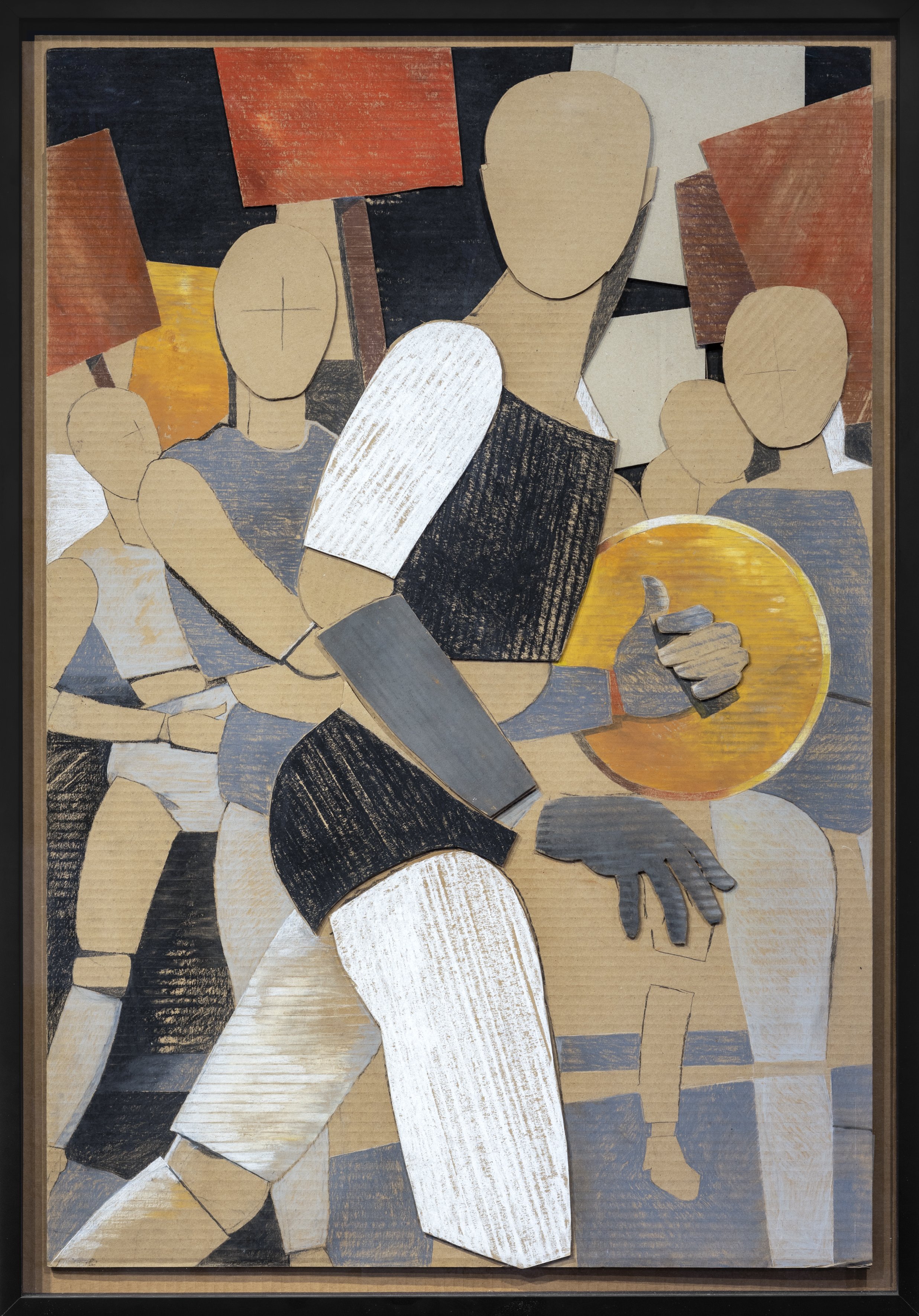Jann Haworth: Out of the Rectangle @ Gazelli Art House
Does art have to be restricted to the geometry it is prescribed? No. But is it often limited to the geometry it is prescribed? Absolutely.
Gazelli Art House’s latest exhibition of Pop Art pioneer Jann Haworth literally and metaphorically breaks away from the tight confines of traditional art viewing and doing: picture frames, wall displays, and the white cube space. As Haworth poignantly stated in the exhibition’s press release, “Something so ubiquitous is worth questioning and disrupting.” Question and disrupt she did.
Jann Haworth pictured with Old Lady, 1962/3. Courtesy of Gazelli Art House. Photo: Deniz Guzel.
Beginning a solo show with an artist’s most notable and historical works is often tempting. But, taking a cue from Haworth’s own daring spirit, Gazelli Art House ran in the opposite direction by immediately confronting visitors with the artist’s newest creations. More than this, the pieces do not seem to be works of art in the traditional sense.
To an untrained eye, artworks like Colour Film Cloak (2023) and Black and White Film Cloak (2023) are not artworks at all but pieces of clothing spread out and fixed to a wall in the same manner as one might have seen in the Chinese wings at the Victoria and Albert Museum. And they would be correct. Indeed, Haworth’s cloaks were designed with the capability to be entirely functional. To limit their function in this way, however, would be incorrect.
Taking a closer look at the details on each cloak, it is overwhelmingly clear that they have every bit of artistic integrity as a screenprint by fellow Pop Art contemporary Andy Warhol. Across the sleeves and the body of the cloaks, columns of individual movie scenes have been carefully painted onto the canvas and linen material using stencils Haworth created by hand. Many of the scenes printed onto the cloaks relate to projects her father, Ted Haworth, a prominent film director in the early days of Hollywood, either directed or those that were popular at the time. In the coloured Western-inspired cloak, stills from films including “Last Cowboy” and “Easy Rider” can be spotted. In the monochromatic cloak, which focuses on the black-and-white genre, Marilyn Monroe in “Some Like It Hot” and “Invasion of the Bodysnatchers” are featured.
Part of the fun is guessing which films or Hollywood stars and starlets one can spot in the reels of movie scenes. But take care not to become so engrossed in the Hollywood guessing game that the cloaks’ unique hanging is missed. Rather than being pasted perfectly to the wall, the cloaks have been loosely fixed, allowing the edges to lift slightly so the fabric can ripple as it would on the body of its wearer. This attention to a material’s sensitivity is one of the reasons Haworth grew to prominence in the 1960s and why she continues to be one of the greatest manipulators of fabric in today’s art world.
Untitled (Corset), 2022. Oil on linen and cotton canvases, 79 × 152cm. Photo: Ilaria Bevan.
Even more impressive is Untitled (Corset) (2022). Suspended in a small room and lit by bright movie-set lighting, the corset marries Haworth’s two greatest passions: advocating for female representation in the art and reimagining contemporary craft and culture. Painted with striking ochres, greens, rust reds and browns, the carefully intertwined strips of linen-canvas fabric that create the corset’s layered structure appear even more intricate.
The extended strips of fabric jutting out of the corset’s core are entirely reminiscent of the clothing cut-outs one could construct outfits on hangers with that were popular in the early 2000s. Its almost two-dimensional appearance only enhances the memory of this nostalgic DIY. Like the cloaks in the adjoining room, the corset is both aesthetic and entirely functional. However, untying the lace-up detailing in the back of the piece would certainly be to its detriment.
Old Lady, 1962/3. Cotton fabrics, wooden chair and woollen shawl, 135 × 60 × 50cm. Courtesy of Gazelli Art House. Photos: Deniz Guzel.
Upstairs, Haworth’s material manipulations are even more daring.
Tucked away in a corner room is Old Lady (1962/3), the first of her historic soft sculptures based on photographs of the artist’s grandmother. Seated in a chair, which also acts as the structure of her body, the old woman, still dressed in her lacy skirt, leather lace-up booths and glasses, appears to be taking a much-needed nap. But, although she may be tired, slumped and worn out, the innovation and skill required to build her being is just as exciting as it was during its debut in the early 1960s. In particular, the face and hair are exceptionally intricate; rolls of different patterned and coloured fabrics rolled together to create the folds of ageing skin and found bits of faded lace twisted into a bun perfectly evoke the frizzy chaotic texture of the woman’s hair.
Sleeve art for Sgt. Pepper's Lonely Hearts Club Band (1967, Parlophone / EMI). Cover art by MC Productions and The Apple. Staged by Peter Blake and Jann Haworth. Photographed by Michael Cooper. Wax figures by Madame Tussauds. Courtesy BBC Arts.
It is exhilarating to see Haworth’s sculpture in the (fabric) flesh after recognising it from the beloved Beatles’ Sgt. Pepper’s Lonely Hearts Club Band album cover. Positioned beneath a palm tree tucked in the lower right corner with a Shirley Temple doll, Old Lady is one of Haworth’s contributions to the cover, which she co-created with her then-husband Peter Blake.
As a record that many, including this reviewer, grew up listening to and were inspired by, this feels particularly poignant. But, more importantly, to have this relic of 1960s pop music culture featured so prominently within the exhibition in its own deserved space is the perfect ode to the moral of the exhibition. First, women artists need to be recognised for their contributions to culture, and second, Haworth has never been afraid to step out of the box to create something new, exciting and pivotal.
Mannequin Defector, 2022. Oil painted canvas over seamstress dummy, 173 × 66 × 55 cm. Courtesy of Gazelli Art House. Photo: Deniz Guzel.
Details from Mannequin Defector, 2022. Photo: Ilaria Bevan.
The second soft sculpture, Mannequin Defactor (2022), is part of Haworth’s new thematic series that binds soft sculpture and the human form. As the title suggests, Mannequin Defactor takes its form from a found mannequin. She is bent into position and given additional humanising accessories such as hair made from ripped and painted canvas strips and a brown oil-painted tunic. The faceless figure, a motif explored in other works in the exhibition, stands upright, holding a piece of scarlet fabric, like a matador ready to taunt the bull and ready to fight.
Installation image. Courtesy of Gazelli Art House. Photo: Deniz Guzel.
This fighting spirit is matched in the cardboard friezes that decorate the surrounding walls. Without a doubt, they are the most powerful works in the exhibition. Invariably titled Series March or March, the works portray the women’s protests in March 2016 when former president and jail-time potential candidate Donald Trump was elected into office.
The diptych March: February (2017) and March: March (2017) are incredibly captivating. As Henri Matisse would have, Haworth has cut the shapes comprising the central gladiator-like figure and the surrounding chaos and used the leftover scraps to create its inverse partner. Pastel added to each piece makes each element pop and highlights the cardboard’s material texture as the pastel picks up on its corrugated folds, creating striped patterns that catch the eye.
Rather than being heavy-handed with the pastel, Haworth keeps a light touch to retain these imperfections, making the mannequin figures appear more lifelike. One detail that particularly stands out is her decision to rip away the top layer of cardboard on some of the protest posters to reveal the folds underneath, signalling the roughness of the fight. Now that Trump has the potential to be locked up for 136 years, we might finally be able to put our pitchforks down.
After the Covid-19 pandemic, Haworth desired to shake things up and step out of the box - literally and figuratively - and her new works do just that. They are incredibly insightful, introspective and innovative. However, what is most exciting is seeing how she developed as an artist during this period of uncertainty. By revisiting former subjects and imbuing them with a warmer, softer quality, the works, and this exhibition, reflects who Haworth is as an artist today, over sixty years from when she first began her career.
Jann Haworth: Out of the Rectangle is on view at Gazelli Art House until May 13, 2023.
Ilaria Bevan
Editor in Chief, MADE IN BED



